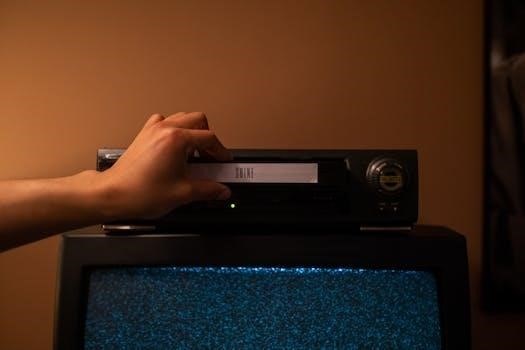KB4103720 Manual Download⁚ An Overview
KB4103720 is a cumulative update for Windows 10 version 1607 and Windows Server 2016․ It can be manually downloaded from the Microsoft Update Catalog due to issues with automatic installations․ This update includes fixes and improvements to the system․
KB4103720 is a significant cumulative update released for Windows 10 version 1607 and Windows Server 2016, identified by the OS build 14393․2273․ This update was made available in May 2018 and contains numerous quality improvements and security fixes, addressing various issues that users were encountering․ It is important to note that this update is specifically for the Anniversary Update branch of Windows 10 and its corresponding server edition․ The update package can be substantial in size, sometimes reaching up to 1․2 GB, although subsequent installations may only download the new fixes․ Due to potential installation issues, a manual download option from the Microsoft Update Catalog is often necessary for proper deployment․ Furthermore, KB4103720 is often associated with Servicing Stack Updates (SSU), making it vital to consider dependencies during installation․ This update is a crucial component of the ongoing maintenance and security for affected systems, ensuring stability and protection against potential threats;
Operating Systems Affected
The KB4103720 update primarily targets two specific operating systems⁚ Windows 10 version 1607, also known as the Anniversary Update, and Windows Server 2016․ These operating systems are the main focus of this particular cumulative update, encompassing both desktop and server environments․ It’s important to verify your OS version before proceeding with the manual download and installation, as applying it to an incompatible OS may cause unforeseen issues․ Windows 10 LTSB (Long-Term Servicing Branch) 2016 is also affected by this update, as it is based on the same codebase; This makes the update relevant for those using enterprise versions of Windows․ The update’s purpose is to deliver essential fixes, enhancements, and security patches to these targeted systems, ensuring their continued functionality and protection․ Therefore, users running Windows 10 version 1607 or Windows Server 2016 should pay close attention to this update’s availability and installation procedure․ It is crucial to note that other Windows versions are not intended to receive this specific update․

Common Issues with KB4103720 Installation
Users often face installation failures with KB4103720, encountering error codes․ DISM and SFC errors can also occur, alongside conflicts with other updates․ These issues can prevent successful installation․
Installation Failures and Error Codes
Many users have reported encountering significant challenges when attempting to install KB4103720, with installation failures being a common occurrence․ These failures often manifest with specific error codes, such as the frustrating 0x80073701, which indicates a potential issue with the Windows update components․ Another frequently reported error is 2149842967, which can appear during the installation process initiated via the command line․ These error codes can be particularly perplexing for users, as they don’t always provide clear guidance on the root cause of the problem․ These errors can leave systems in an inconsistent state, hindering the ability to apply subsequent updates․ The presence of these errors during installation underscores the need for a manual download approach․ It also highlights the importance of troubleshooting steps, when automatic update installation fails․
Troubleshooting DISM and SFC Errors
When facing issues with KB4103720 installation, users often turn to DISM (Deployment Image Servicing and Management) and SFC (System File Checker) for troubleshooting․ These tools are designed to repair corrupted system files and components․ However, users have reported that running DISM commands, such as `/Online /Cleanup-Image /RestoreHealth`, and SFC with the `/scannow` option, sometimes do not resolve the underlying problem․ This can be particularly frustrating, as these tools are typically reliable for fixing Windows update issues․ The inability of DISM and SFC to rectify the installation errors suggests that the issues may stem from deeper system conflicts․ It may also indicate that the update itself has problems, or that some other factors are preventing successful installation․ This creates a need for manual intervention, including downloading the update directly from the Microsoft Catalog and trying to install it manually․ This process is often the next step for users who have exhausted other methods․
Conflicts with other Updates
Conflicts with other updates can be a significant hurdle when installing KB4103720․ Some users have reported that the update fails to install if certain servicing stack updates (SSU) are missing or outdated․ For example, it’s been noted that KB4132216 might need to be installed before KB4103720․ The error messages, such as 0x80073701, often point to these kinds of incompatibilities․ Furthermore, conflicts with other cumulative updates or security patches can also cause installation issues․ These conflicts are not always easily identifiable, making troubleshooting difficult․ Users sometimes find themselves in a situation where they have to manually install these updates in a specific order․ Disabling antivirus software, while not directly related to update conflicts, is a step often taken to prevent interference during the update process․ Therefore, it is vital to ensure all prerequisite updates are installed and that no other pending updates are interfering with the installation․

Manual Download and Installation Process
The manual process involves locating the update on the Microsoft Catalog, downloading the correct file, and then manually installing it․ This method is helpful when automatic updates fail or when specific versions are needed․
Finding KB4103720 in the Microsoft Catalog
To locate KB4103720, begin by navigating to the official Microsoft Update Catalog website using a web browser․ In the search bar, type “KB4103720” and initiate the search․ The catalog will then display a list of updates․ It is crucial to identify the specific update that corresponds to your operating system, whether it’s Windows 10 version 1607 or Windows Server 2016․ Verify the architecture, such as x64-based systems, to ensure compatibility․ The Microsoft Catalog provides various versions of the update, so make sure to select the correct one․ Look for the release date of May 17, 2018, to confirm that you have the right KB4103720 update․ Once found, you can proceed with downloading the file from the catalog․ Pay close attention to the file sizes as well, which is usually around 1․2GB․ The catalog may require active scripting and ActiveX controls to be enabled in your browser settings for the download to function properly․
Steps for Manual Download
After locating the correct KB4103720 update in the Microsoft Update Catalog, the manual download process can begin․ Click on the “Download” button next to the appropriate update version for your system․ This will redirect you to a new page with a direct link to the ․msu file․ Click on this link to start the download․ Depending on your internet speed, the download of the 1․2GB file might take some time․ Ensure you have a stable internet connection to avoid interruptions․ Once the download is complete, verify the file integrity․ It is recommended to save the downloaded file to a location where it can be easily accessed for installation․ Remember the location for later use․ After downloading, disable any antivirus software that might interfere with the installation process․ This is a crucial step to avoid potential installation errors․ Finally, make sure that any other pending updates are completed before running the downloaded KB4103720 update file․
Installation Procedures
After successfully downloading the KB4103720 ․msu file, the next step is to install the update manually․ Locate the downloaded file, typically found in your downloads folder or the location where you saved it․ Double-click the ․msu file to start the installation process․ The Windows Update Standalone Installer will launch, guiding you through the installation․ A prompt will appear, asking for confirmation to install the update; click “Yes” to proceed․ The installation might take some time, so allow it to complete without interruption․ During installation, it is normal for the system to restart automatically․ Save your work before starting the update and be sure to close all open applications․ The system will display a progress bar showing the update status․ After the installation is complete, the system will restart again․ It is essential to let the system fully restart to complete the update process․ Post-restart, verify the update by checking the update history․ If the installation was successful, KB4103720 will be listed in the update history․

Additional Information
This update is crucial for systems running Windows 10 version 1607 and Windows Server 2016․ It’s important to ensure the correct Servicing Stack Update is installed beforehand to avoid errors; KB4103720 addresses various issues and enhances system stability․
KB4103720 and Servicing Stack Updates (SSU)
The installation of KB4103720, a cumulative update, is often intertwined with the necessity of having the correct Servicing Stack Updates (SSU) installed beforehand․ SSUs are critical components that provide the servicing mechanism for Windows, ensuring that updates can be installed smoothly․ Failing to have the compatible SSU can lead to installation failures, error codes, and general update problems․ For instance, some users have reported that missing SSUs, like KB4132216, have prevented the successful application of KB4103720․ Therefore, prior to attempting to manually install KB4103720, it is imperative to verify that all necessary SSUs are already installed․ If not, you should download and install the appropriate SSU first․ The correct SSU ensures compatibility and enhances the overall update process, reducing the chances of encountering issues such as error 0x80073701․ Having the correct SSU in place is crucial to maintain system stability and efficient updating․
Devices Supported by this Update
KB4103720, while primarily targeting Windows 10 version 1607 and Windows Server 2016, has a specific scope of devices it is designed to support․ According to available information, this update is applicable to a range of systems, including various desktop and server configurations․ Notably, some thin client devices like the Wyse 5060, and mobile thin clients such as the Latitude 3480 and Latitude 5280, have been explicitly mentioned as supported by this update․ This indicates that KB4103720 is not solely restricted to standard desktop or server environments․ It also extends to specialized hardware used in corporate settings․ However, it is crucial to note that the core focus remains on systems running Windows 10 version 1607 and Windows Server 2016․ Therefore, users with other versions of Windows or different devices should verify compatibility before attempting to install this specific update․ Compatibility is important for avoiding unexpected issues during the installation process․

Impact on Windows Server 2016
The KB4103720 update significantly impacts Windows Server 2016, primarily as a cumulative update․ This means it includes previously released fixes and improvements, addressing a range of issues present in the operating system․ Its installation is crucial for maintaining system stability and security․ However, problems with installing this update have been frequently reported on Server 2016, with users experiencing failures and error codes․ These errors often necessitate manual downloads and installations․ Furthermore, conflicts with other updates or missing servicing stack updates can complicate the process further․ It is also known that this update is part of the cumulative updates released in May 2018․ The update is designed to bring the system to OS Build 14393․2273․ Therefore, while crucial for maintaining Windows Server 2016, its application has been challenging, requiring careful management and troubleshooting to avoid complications and ensure successful installation․
